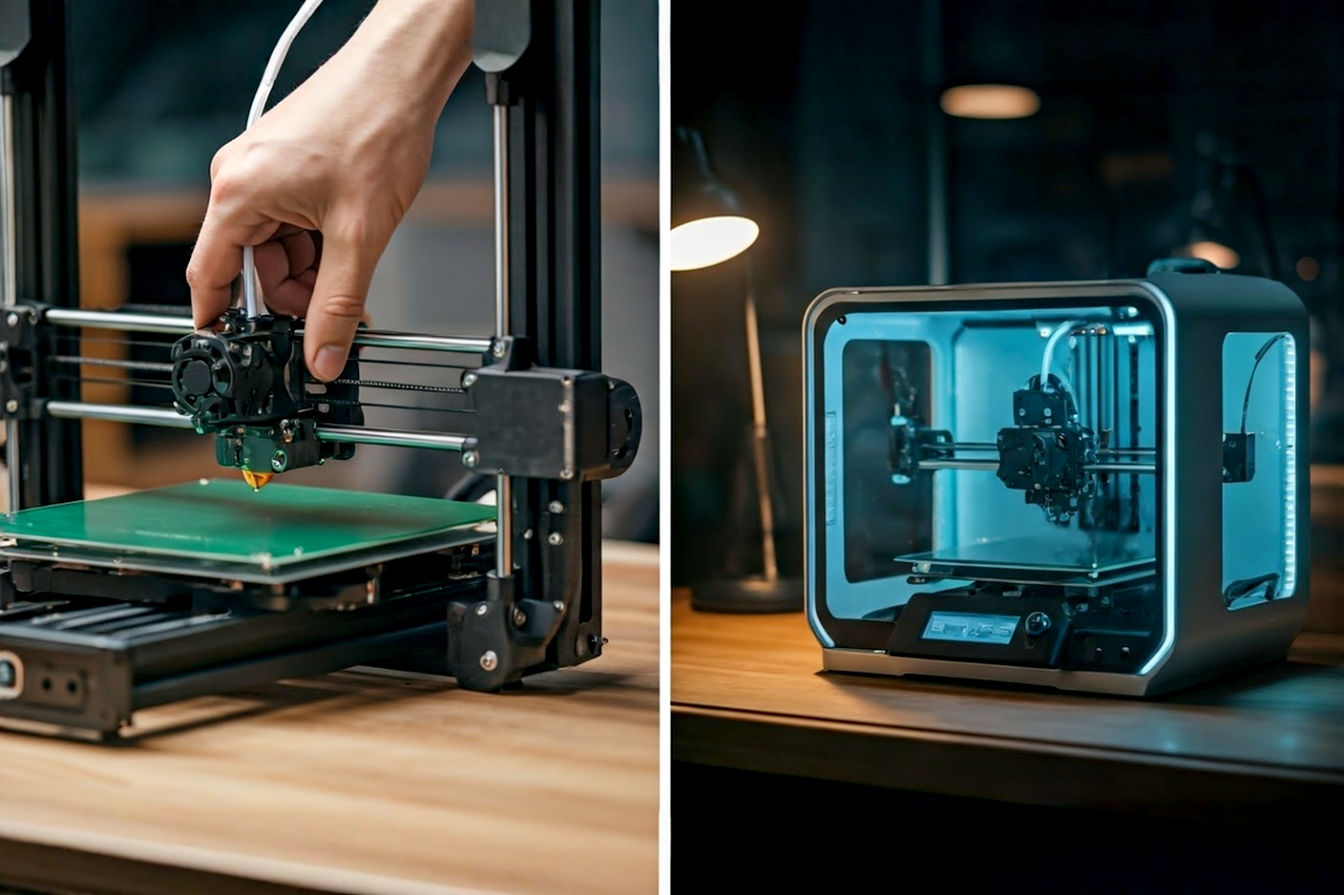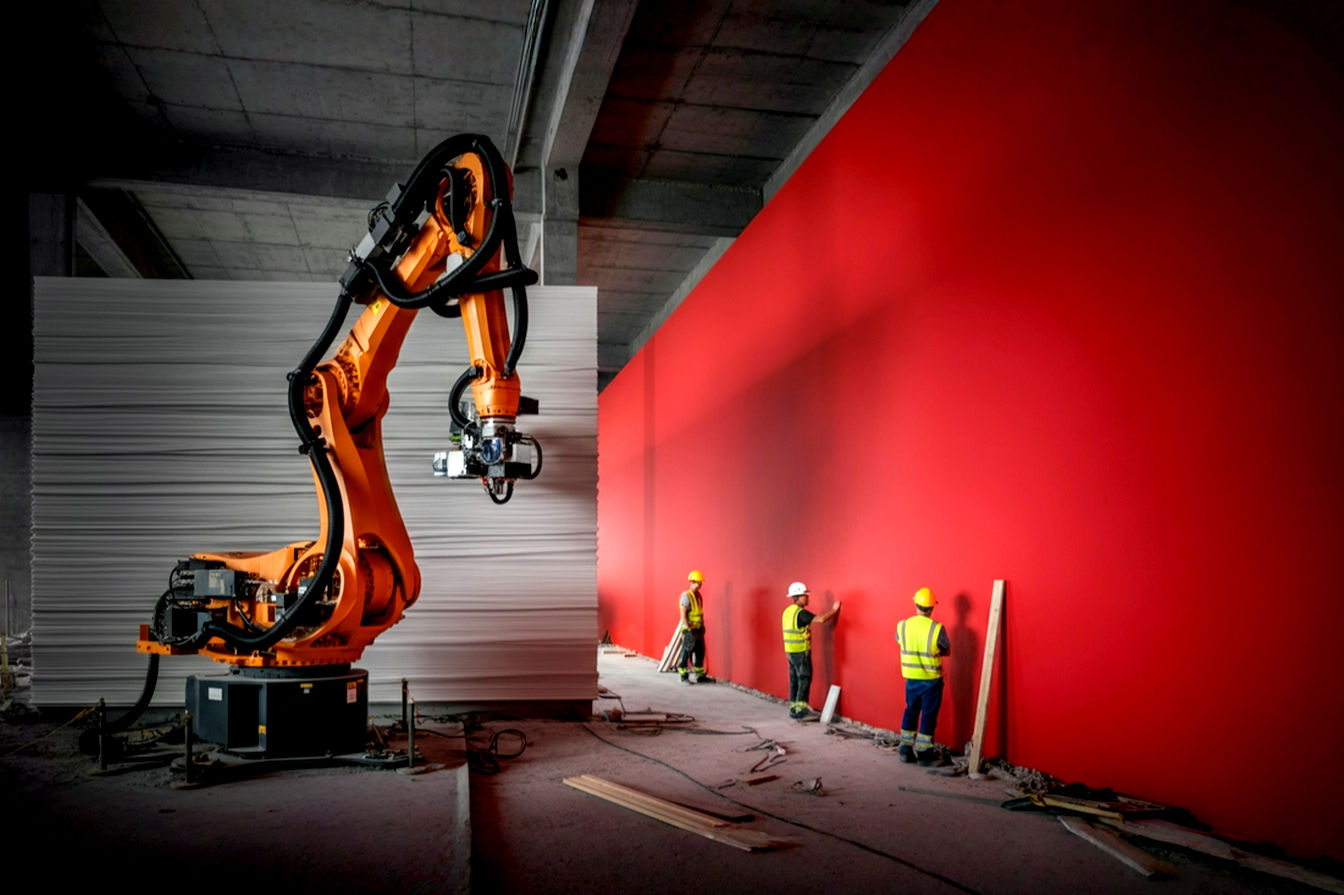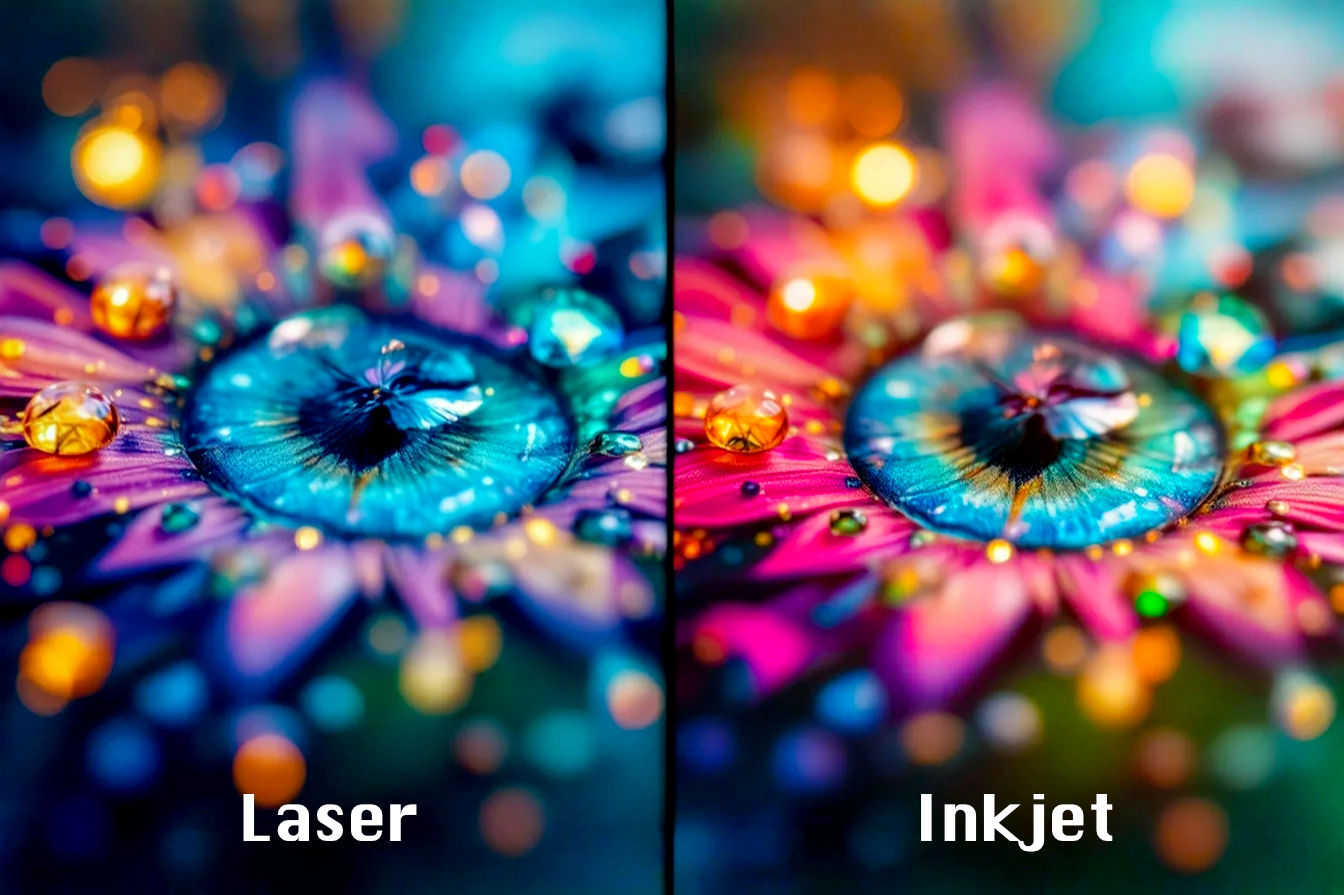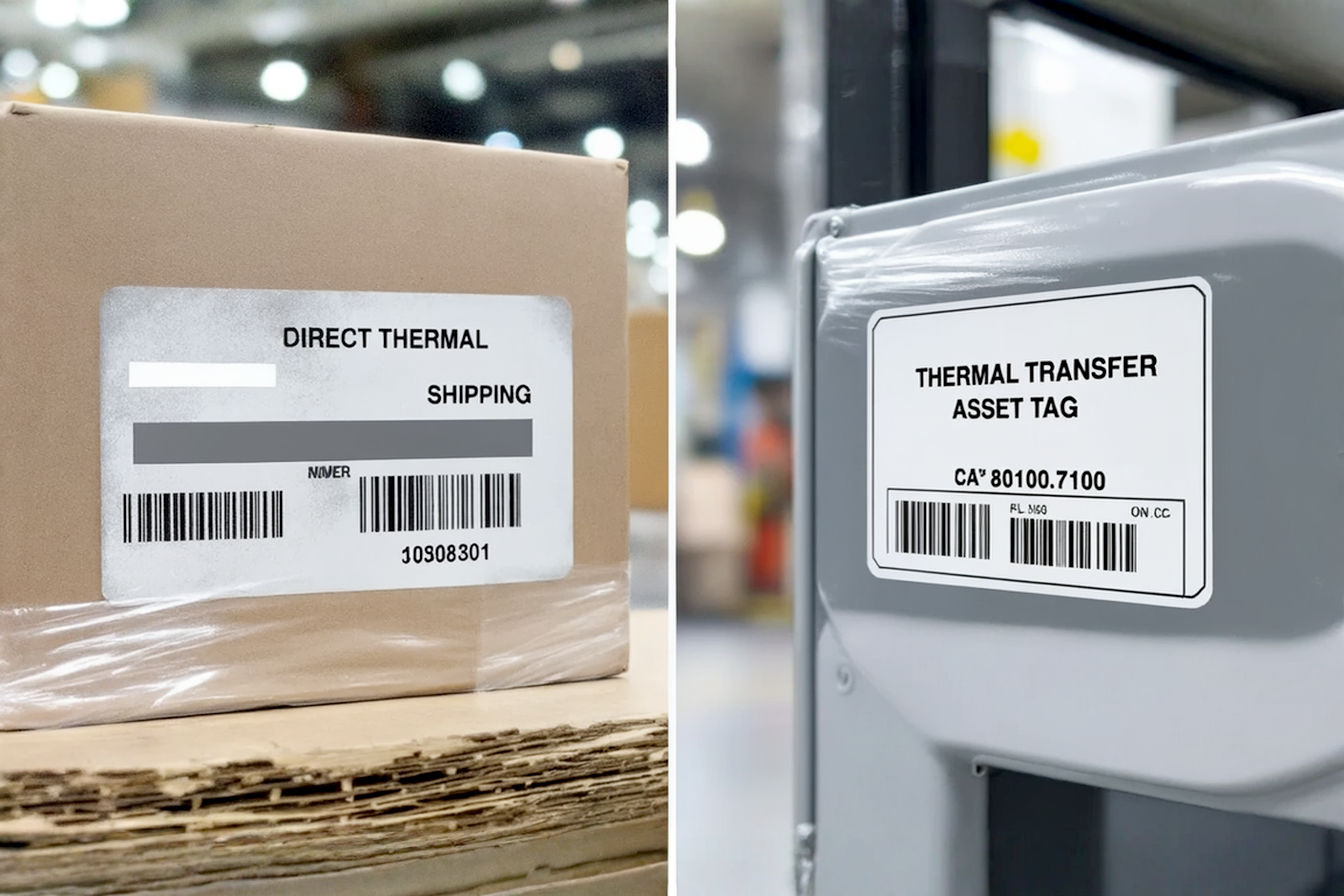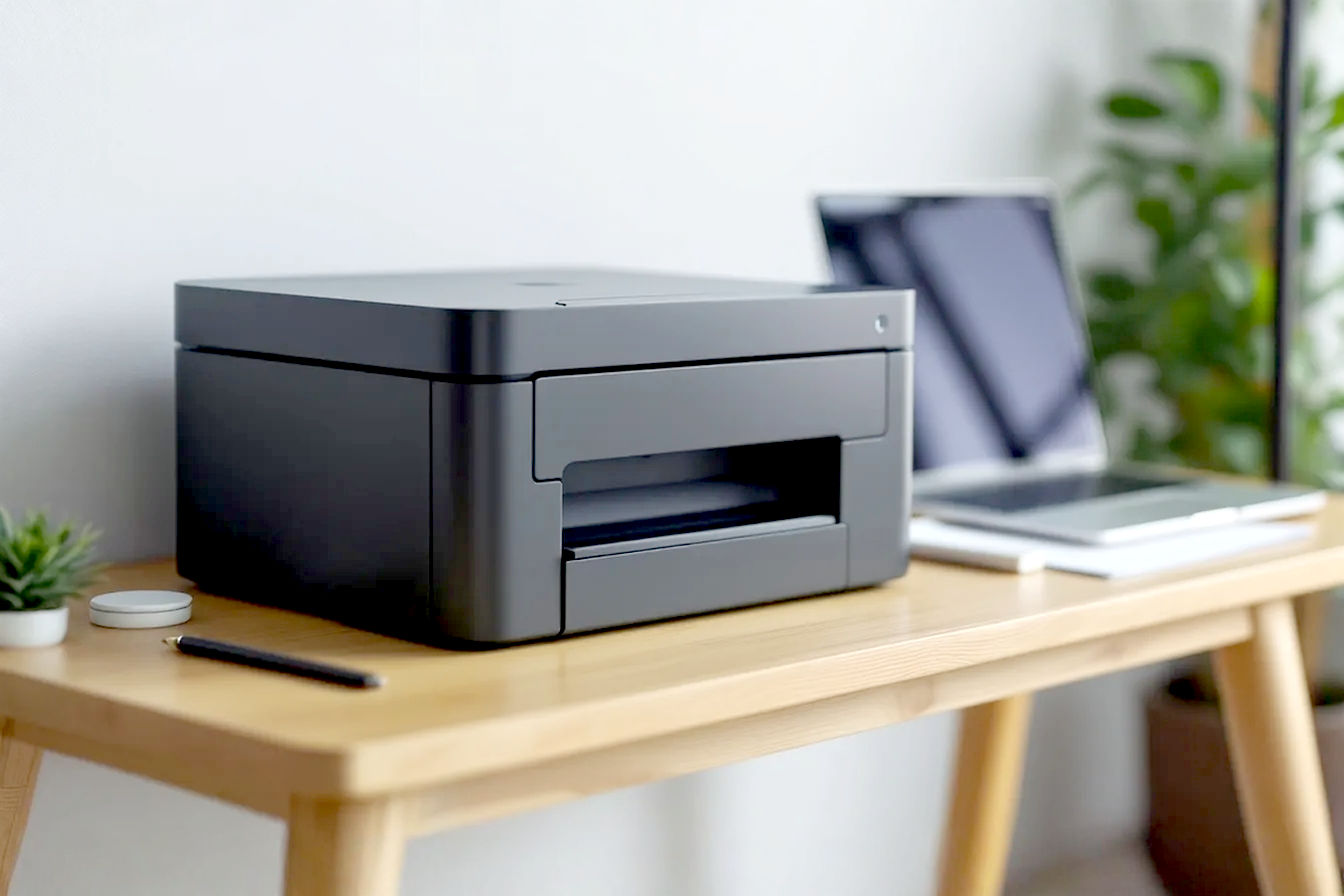This post may contain affiliate links. If you make a purchase through these links, we may earn a commission at no additional cost to you.
Remember the sound? That distinct, rhythmic rat-a-tat-tat that filled offices and homes not too long ago? It was the sound of a dot matrix printer hard at work, spitting out documents on that instantly recognizable paper with the little holes down the sides. For many, this paper, often called continuous form or fanfold paper, is a symbol of a bygone era of computing. It evokes memories of long printouts, green-bar lines, and the satisfying tear along the perforations.
But what if I told you this isn’t just a relic of the past? While certainly not as common as it once was, dot matrix printer paper, and the technology it serves, hasn’t vanished completely. Its story is a fascinating journey from early communication tech to a dominant force in computing, its decline, and its surprising persistence in specific, vital roles. Let’s unfold the history of this unique paper and peek into what its future might hold.
The Dawn of Impact Printing
Printing technology has always been about making information permanent and shareable. Before the digital age, mechanical typewriters used impact – a hammer hitting an inked ribbon against paper – to create characters. This fundamental idea of impact was crucial for making multiple copies simultaneously using carbon paper.
The concept of forming characters not with a solid shape but with a pattern of dots emerged surprisingly early. One of the first examples was the Hellschreiber, invented by Rudolf Hell in Germany in the 1920s. This wasn’t a printer in the modern sense, but a facsimile-like device that transmitted text using a dot-based system. It showed that you could create readable characters by selectively marking points in a grid, or matrix.
Fast forward a few decades, and inventors began applying this dot-matrix concept to printing devices. A key figure was Fritz Karl Preikschat, who filed patents in the 1950s for a dot matrix teletypewriter. His work laid important groundwork, even if commercial success didn’t immediately follow. These early efforts demonstrated the potential for a more flexible way to print compared to fixed-font typewriters or early line printers.
The Birth of the Dot Matrix Printer
The late 1960s marked a turning point. Japanese manufacturer OKI introduced one of the first commercial serial impact dot matrix printers (SIDM), the OKI Wiredot, in 1968. This machine was designed for business and scientific use, capable of printing 128 characters using a 7×5 dot matrix. It was a significant step towards making dot matrix technology practical for generating text from computers.
Following OKI’s lead, other companies began developing their own dot matrix printers. Digital Equipment Corporation (DEC), a major player in the minicomputer market, introduced its LA30 dot matrix printer in 1970. Printing at 30 characters per second, it was one of the early models to find its way into data centers and businesses connected to minicomputers. These early printers were often large, noisy, and primarily used for printing data logs and reports.
What made these printers different was their print head. Instead of a pre-formed character slug like a typewriter or daisywheel printer, the dot matrix print head contained a vertical row of tiny pins. These pins could be fired individually and rapidly. As the print head moved across the paper, the pins would strike an inked ribbon, creating a pattern of dots that formed letters, numbers, or even simple graphics. The arrangement of these dots in a grid is where the “matrix” in dot matrix comes from.
Continuous Form Paper: The Perfect Partner
The innovation in printers needed a corresponding innovation in paper handling. Traditional printers used individual sheets, which was fine for letters but inefficient for printing long reports or continuous streams of data from computers. This is where continuous form paper, also known as fanfold paper or tractor feed paper, became essential.
This paper isn’t just a long roll; it’s a single, continuous sheet folded back and forth upon itself like an accordion or a fan. This fanfold design allows for a large stack of paper to be fed into the printer without needing constant reloading.
The Role of Sprocket Holes
The most distinctive feature of continuous form paper is the row of small holes running down each side margin. These are called sprocket holes or tractor holes. They are precisely spaced and serve a critical purpose: feeding the paper through the printer reliably.
Dot matrix printers designed for this paper have a mechanism called a tractor feed. This consists of two sets of wheels or belts with pins (sprockets) that engage with the holes in the paper margins. The tractor feed pulls the paper through the printer with great accuracy, ensuring that each line is printed in the correct position and preventing the paper from skewing or jamming, especially during long print jobs. This positive, mechanical feeding mechanism was far more reliable for continuous printing than friction-based methods used for single sheets.
Perforations: Tearing Apart the Continuous Stream
Continuous form paper also includes horizontal perforations between each sheet. These tiny cuts allow the user to easily tear off individual pages or sections from the continuous stream once printing is complete. There are usually also vertical perforations between the main body of the page and the sprocket hole margins, allowing those strips to be removed for a cleaner look. The standard size for many years was 11 inches by 9.5 inches, though many variations existed. Often, the paper had alternating colored bands (like green and white) to help users track lines of data on long printouts, hence the term “green bar paper.”
The Golden Age
The 1970s and 1980s were the heyday of the dot matrix printer and its continuous paper companion. As personal computers like the Apple II, Commodore 64, and IBM PC became more common, affordable printers were needed. Dot matrix printers offered a good balance of cost, speed, and versatility compared to the slower, more expensive daisywheel printers (which could only print text in a single font) or the emerging, but still costly, laser printers.
Printers like the Epson MX-80, introduced around 1980, became incredibly popular. They were relatively inexpensive, reasonably fast for the time, and could print both text and basic graphics. While the print quality wasn’t as sharp as a typewriter (you could clearly see the dots), it was perfectly acceptable for drafts, reports, code listings, and personal use. The loud noise of the print head became a familiar sound in homes and offices.
Businesses adopted dot matrix printers widely for tasks requiring continuous printing or multiple copies. Invoices, shipping manifests, inventory reports, accounting ledgers, and internal memos were often churned out on fanfold paper. The reliability of the tractor feed meant that print jobs could run unattended for significant periods.
Beyond Simple Text
As the technology matured, dot matrix printers became more sophisticated. Early models used a 7×5 or 9-pin print head, producing characters that were clearly formed from dots. Later printers increased the number of pins, often to 24 pins, arranged in a denser configuration. This allowed for higher resolution printing, producing text that was closer to typewriter quality, often referred to as Near Letter Quality (NLQ). While still dot-based, the dots were smaller and closer together, making characters look smoother.
These improved printers could also handle more complex graphics. Software emerged that could take advantage of the printer’s “dot-addressable” capability, allowing individual dots to be controlled. This made it possible to print charts, graphs, banners, and simple images. Programs like Broderbund’s “The Print Shop” became popular for creating greeting cards and signs using dot matrix graphics. Some high-end models even experimented with color printing using multi-colored ribbons, though this was slow and the color quality was limited.
The Magic of Multi-Part Forms
One of the most enduring and critical applications for dot matrix printers was printing on multi-part forms. These forms consist of several layers of paper bound together, designed to create instant carbon copies without needing separate carbon paper sheets.
The technology behind this is often called NCR (No Carbon Required) paper. Instead of a layer of carbon, NCR paper uses a chemical coating system. The back of the top sheet is coated with tiny microcapsules containing a dye. The front of the sheet underneath is coated with a reactive clay. When the print head of a dot matrix printer strikes the top sheet, the impact pressure breaks the microcapsules, releasing the dye onto the reactive clay on the sheet below, instantly creating a copy. This process repeats through subsequent layers, allowing 2-part, 3-part, 4-part, or even 5-part forms to be created with a single pass through the printer.
Why Impact Was Essential
This is where dot matrix printers had a distinct advantage over non-impact technologies like inkjet or laser printers. Inkjet printers spray ink, and laser printers use heat and toner; neither applies the physical pressure needed to activate the chemical reaction in NCR paper. Only an impact printer, like a dot matrix, could reliably create copies on multi-part forms.
This capability made dot matrix printers indispensable in many business applications where instant, multiple copies were required:
- Invoices and Receipts: Providing customers with a copy, keeping one for accounting, and perhaps one for shipping or inventory.
- Order Forms: Distributing copies to different departments (sales, warehouse, billing).
- Log Books and Maintenance Records: Creating duplicate records for safety or compliance.
- Shipping Documents: Generating packing slips and carrier copies.
- Tickets: Producing multiple copies for events or services.
The ability to print on continuous, multi-part forms directly from a computer system was a major driver of dot matrix printer adoption in commercial settings.
The Decline
The late 1990s and early 2000s saw a significant shift in the printer market. Inkjet and laser printers became more affordable, faster, and offered significantly higher print quality.
Inkjet printers, which spray microscopic droplets of ink, could produce much sharper text and vibrant color graphics. Laser printers, using a process similar to photocopiers, offered incredibly fast printing and crisp, professional-looking text, especially for high-volume jobs.
Compared to these newer technologies, dot matrix printers had several drawbacks:
- Noise: The impact mechanism was inherently loud.
- Speed: While faster than early models, they were generally slower than comparable laser printers for text and much slower for graphics.
- Print Quality: Even with 24 pins and NLQ, the output was still visibly dotty compared to the smooth lines of laser or high-resolution inkjet prints.
- Color: Color capability was limited and slow.
As a result, dot matrix printers were largely replaced in offices and homes for general-purpose printing tasks like letters, reports, and photos. Single-sheet paper became the norm, fed by friction rollers in inkjet and laser printers. The iconic fanfold paper began to disappear from desksides.
The Niche Survivor
Despite their widespread replacement for general use, dot matrix printers and their paper didn’t vanish entirely. They found, and still occupy, important niches where their unique characteristics remain valuable.
Durability and Harsh Environments
Dot matrix printers are built tough. Their mechanical nature makes them more resistant to dust, grease, and extreme temperatures than inkjet or laser printers, which have more sensitive components. This makes them suitable for industrial settings, warehouses, manufacturing floors, and outdoor kiosks where conditions might not be ideal for other printer types.
Multipart Forms Remain Key
As discussed, the ability to print genuine, impact-created carbon copies on multi-part NCR forms is still a critical requirement in many businesses. While digital solutions exist, a physical multi-part form provides an instant, tangible copy for multiple parties without needing a copier or separate printing steps. This is why you still see dot matrix printers used for invoices in auto repair shops, receipts in small businesses, medical forms, and various logging applications.
Continuous Feed Applications
The reliable tractor feed mechanism is also essential for applications requiring precise, continuous paper movement or printing on specialized continuous media.
- Braille Embossers: Printers that create raised Braille dots on thick paper often use a modified impact mechanism and rely on sturdy continuous form paper with tractor holes for accurate feeding.
- Data Logging: Some industrial or scientific instruments that need to print continuous streams of data still use small dot matrix mechanisms and continuous paper rolls or fanfold paper.
- Labels and Tags: Continuous form labels and tags, often used for inventory or shipping, are frequently printed on dot matrix printers due to the need for precise feeding and the ability to handle thicker stock.
In these specific use cases, the advantages of dot matrix technology – impact, durability, and precise continuous feeding – outweigh the disadvantages of noise and print quality.
The Lingering Legacy
Even as the physical presence of dot matrix printers has diminished, their legacy persists in unexpected ways.
Perhaps the most common example is the “cc” field in emails. It stands for “carbon copy,” a direct reference to the practice of using carbon paper (or later, NCR paper) to create duplicate copies of a letter or memo simultaneously with the original. The “bcc” field, for “blind carbon copy,” also comes from this era, referring to copies made in such a way that the primary recipient didn’t know who else received a copy. Every time you use “cc” in an email, you’re giving a nod to the age of impact printing and multi-part forms.
For those who grew up or worked during the 70s, 80s, and early 90s, the sight and sound of a dot matrix printer and its distinctive paper are powerful nostalgic triggers. They represent a specific era of computing – one where the physical output of a computer was tangible, noisy, and often came in a long, folded stack. The act of tearing off the perforated edges is a tactile memory many people share.
What’s Next?
Is there a future for dot matrix printer paper beyond its current niche applications? It’s unlikely to make a comeback for general-purpose printing. The advantages of inkjet and laser technology in terms of speed, quality, and quiet operation are simply too significant for most users.
However, as long as there’s a need for reliable impact printing on multi-part forms, or for precise continuous feeding of specialized media like Braille paper or industrial tags, dot matrix technology and its corresponding paper will likely continue to exist. Advances in materials science could potentially lead to more durable or quieter impact mechanisms, or perhaps new types of multi-part paper, but these would likely serve the same niche markets.
One interesting area where the “fanfold” concept persists is in packaging. Continuous, fanfolded corrugated cardboard is used with automated machinery to create custom-sized boxes on demand, reducing waste and storage needs. While not printer paper, it shows the enduring utility of the fanfold design for handling long, continuous materials.
The history of dot matrix printer paper is a story of technological partnership – an innovative printing method paired with a unique paper handling solution. It rose to prominence because it met the needs of a specific era in computing, particularly the demand for affordable output and multi-copy forms.
While its time in the spotlight has passed, it hasn’t faded into complete obscurity. Its continued use in specialized fields, its influence on digital communication terms like “cc,” and its place in the collective memory ensure that the story of dot matrix printer paper is far from over. It remains a testament to how specific technological requirements can keep seemingly outdated solutions relevant in a constantly evolving world.
Conclusion
From the early experiments with dot-based communication to becoming the workhorse of the personal computer revolution and a staple of business operations, dot matrix printer paper has had a surprisingly impactful journey. Its unique design, featuring sprocket holes and fanfold construction, was perfectly matched to the needs of impact printers and the demand for continuous, reliable output, especially for multi-part forms.
Though largely superseded by quieter, faster, and higher-quality technologies like inkjet and laser printing, this distinctive paper and the printers that use it haven’t disappeared entirely. They continue to serve critical functions in specific industries where durability, impact printing for carbon copies, or precise continuous feeding are paramount.
The legacy of this paper lives on, not just in the hum of printers in warehouses or the feel of a multi-part receipt, but even in the language we use daily in our digital lives. The history of dot matrix printer paper is a reminder that technology evolves, but sometimes, the needs it met ensure a quiet, persistent existence for even the most iconic symbols of a past era.

